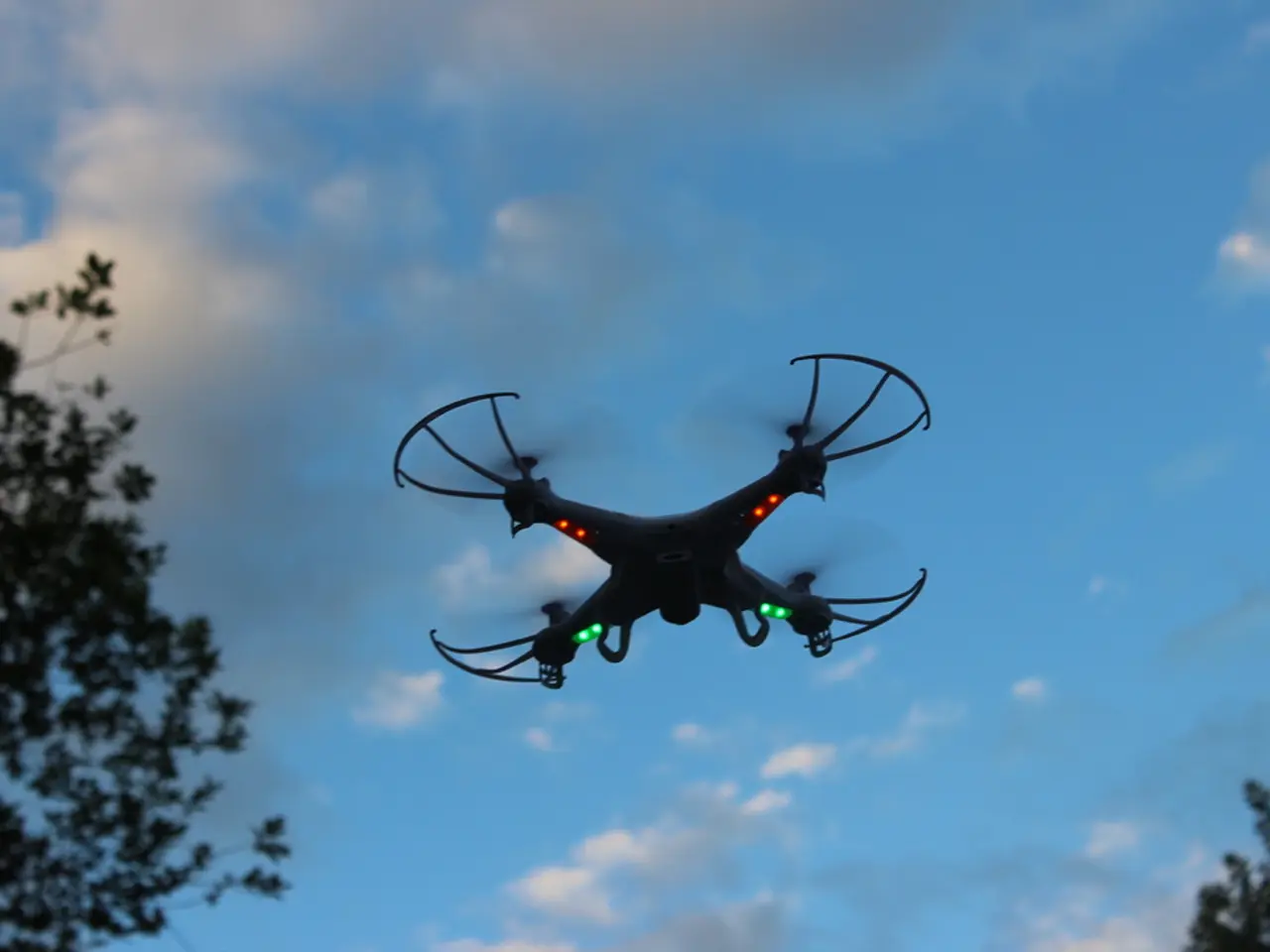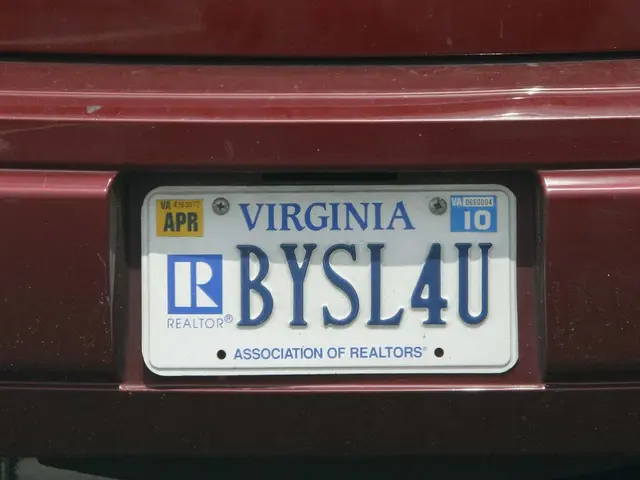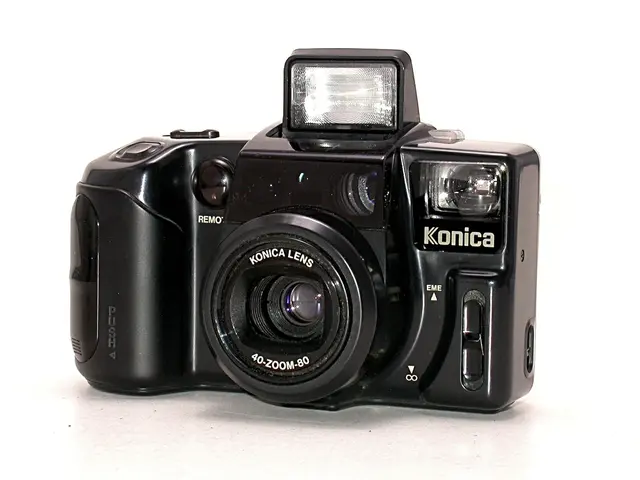Drone Regulations Simplified: A Guide for UK Drone Operators
Frequently Asked Questions About Drone Regulations in the UK
Navigating the complexities of drone operations in the UK can be a challenge, but don't worry, we've got your back! This FAQ will cover all the essential aspects of drone certification, safety, rules, privacy concerns, and potential penalties to help you fly safely and legally. Whether you're a new pilot or an experienced one, this guide will help you sail through the UK's drone regulations.
General Questions
What do I need to fly a drone in the UK?
To fly a drone weighing 250 grams or more, you'll need to register it with the Civil Aviation Authority (CAA), obtain a Flyer ID by passing an online theory test, and an Operator ID for the drone supervisor. Additionally, adhere to rules like flying below 120 meters (400 feet) and keeping your drone within visual line of sight (VLOS).
Do I need a license to fly a drone recreationally?
Yes, if your drone weighs 250 grams or more, you'll need a Flyer ID. If your drone is under 250 grams, you may still need to register it depending on the use case. Safety and operational rules apply to all drone operations.
Where can I fly my drone?
You can fly your drone in open areas, excluding restricted or prohibited zones. Steer clear of airports, military bases, and no-fly zones. Always maintain a safe distance from people, property, and vehicles. Check local regulations using the CAA's Drone Assist app to ensure flying in a permitted area.
What are the penalties for breaking rules?
Penalties range from £1,000 to £50,000 fines and criminal charges for severe violations, such as endangering an aircraft. Ensure you follow all CAA regulations and obtain necessary certifications and authorizations for your drone operations.
Can I fly my drone at night?
Yes, but you must take precautions: your drone should be equipped with anti-collision lights visible from at least 3 nautical miles. You may also need to obtain an Operational Authorization for higher-risk operations.
Certification and Licensing
How do I get a Flyer ID and Operator ID?
To get a Flyer ID, pass the CAA's online theory test, and for an Operator ID, register your drone with the CAA. Both IDs are necessary for legitimate drone operations in the UK.
What certifications are required for advanced operations like BVLOS?
For Beyond Visual Line of Sight (BVLOS) operations, apply for an Operational Authorization from the CAA, involving a risk assessment and safety management plan, often requiring advanced training and equipment to ensure safety.
Is my foreign drone pilot certification valid in the UK?
No, foreign certifications are not automatically valid in the UK. You must obtain a UK Flyer ID and Operator ID for legal drone operations. If you hold advanced certifications from another country, you may need additional training or assessment to meet UK standards.
How often do I need to renew my drone certifications?
There is currently no renewal requirement for Flyer ID or Operator ID unless regulations change. However, keep yourself updated with regulatory updates.
What is the minimum age to get a Flyer ID in the UK?
The minimum age to get a Flyer ID is 13 years old, but the drone supervisor (Operator) must be at least 18 years old.
Operational Questions
What should I do if I lose connection with my drone?
Most drones have a Return-to-Home (RTH) function. Ensure your RTH settings are configured, including a safe return altitude. If manual intervention is needed, follow your drone's emergency procedures.
How can I obtain an Operational Authorization from the CAA?
Submit a detailed application to the CAA, including a comprehensive risk assessment, safety management plan, and proof of your qualifications. The CAA will review your application and may require additional information.
What are the rules for flying a drone near airports?
Drones must stay out of flight restriction zones around airports. Violating these rules can result in severe penalties, including fines and criminal charges.
Can I fly my drone over private property?
Flying over private property requires permission from the property owner or land manager. Privacy concerns and trespassing may arise, so it's essential to get proper permission.
What happens if I break VLOS rules?
Violating VLOS rules can lead to fines, penalties, suspended certifications, or even imprisonment for severe violations. VLOS is a critical safety requirement.
Summary
This comprehensive guide covers the fundamental questions and regulations regarding drone operations in the UK. By adhering to safety protocols, operational guidelines, and understanding privacy concerns and penalties, you can ensure that your drone activities are safe, legal, and in compliance with UK laws. Safe flying!
Remember, this guide is meant to be concise but informative. For further information about drone terms, visit our Drones Acronym Page.
Special thanks to Drone Major Group, Network Rail, and the Civil Aviation Authority (CAA).
Pros
- Easy-to-understand guide
- Comprehensive coverage of drone regulations in the UK
- Enhanced with insights from Drone Major Group, Network Rail, and the CAA
Cons
- Additional information may exist outside this guide
- Regulations are subject to change as technology evolves
You may like
- What is OBIA (Object-Based Image Analysis)?
- What is GML (Geographic Markup Language)?
- What is DRG (Digital Raster Graphic) & How Does it Work?
- What is CIR (Color Infrared) & How Does it Work?
- What is AOI (Area of Interest) & How Does it Work?
- What is STANAG (Standardization Agreement)?
The diverse realm of technology encompasses not only drone regulations but also a plethora of gadgets that complement drone operations. These may include drone-mounted cameras, remote controls, and GPS devices for navigation purposes.
In fact, understanding and utilizing these gadgets effectively can significantly enhance your drone piloting experience, while also ensuring compliance with safety and legal requirements in the UK.








